Imagine stepping into your apartment, greeted by a lush oasis that instantly lifts your spirits and purifies the air. Whether you’re a seasoned green thumb or just starting your journey into the world of plants, creating a verdant sanctuary within the confines of your home is not only possible but immensely rewarding. Apartment living doesn’t mean you have to forego the joys and benefits of gardening; in fact, it offers a unique opportunity to cultivate a personal paradise that reflects your style and nurtures your well-being.
In this article, we’ll explore a curated selection of beautiful plants perfectly suited for apartment life, bringing nature right to your doorstep. You’ll discover how to select and care for plants that thrive in limited spaces, adapt to various light conditions, and require minimal maintenance. Whether you’re looking to add a splash of greenery to your windowsill or transform an entire room into a botanical retreat, we’ve got you covered. Prepare to be inspired as we introduce you to plants that promise not only to beautify your space but also to enhance your everyday living experience.
Choosing Space-Saving Greenery
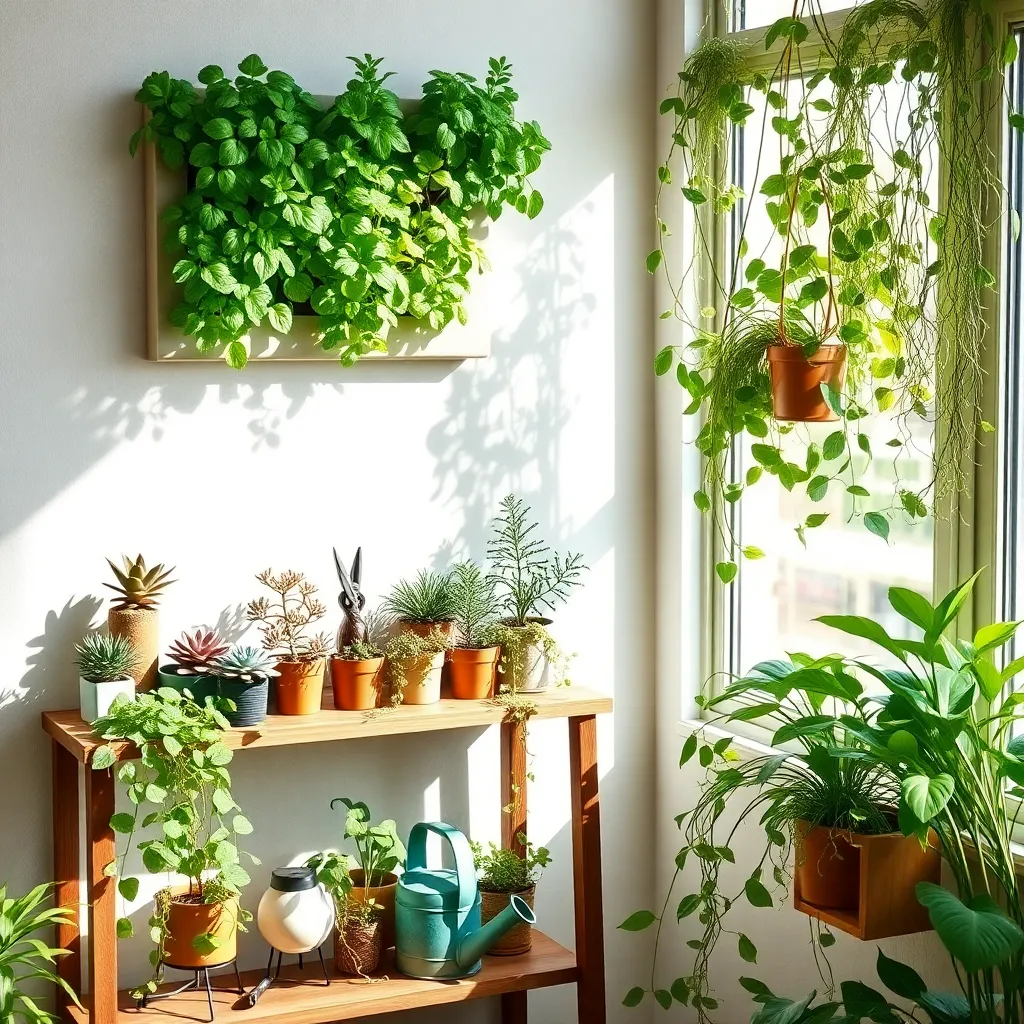
When space is limited, choosing the right plants can make all the difference in your apartment’s ambiance. Vertical gardens are an excellent choice, allowing you to utilize wall space by installing shelves or hanging pots.
Consider plants like pothos or spider plants, which thrive in hanging baskets and add lush greenery without taking up floor space. These plants require well-draining soil and should be watered only when the top inch of soil feels dry, making them low-maintenance choices for busy apartment dwellers.
For those eager to add a bit of flavor to their cooking, growing herbs can be both space-efficient and rewarding. Use small pots or a tiered planter to grow herbs like basil, mint, and thyme on a sunny windowsill, ensuring they receive at least six hours of sunlight each day.
Advanced gardeners might experiment with a hydroponic system, which eliminates the need for soil and maximizes space efficiency. This method can be particularly effective in apartments with limited natural light, as it often incorporates LED grow lights to provide necessary illumination.
Top Low-Light Plant Options
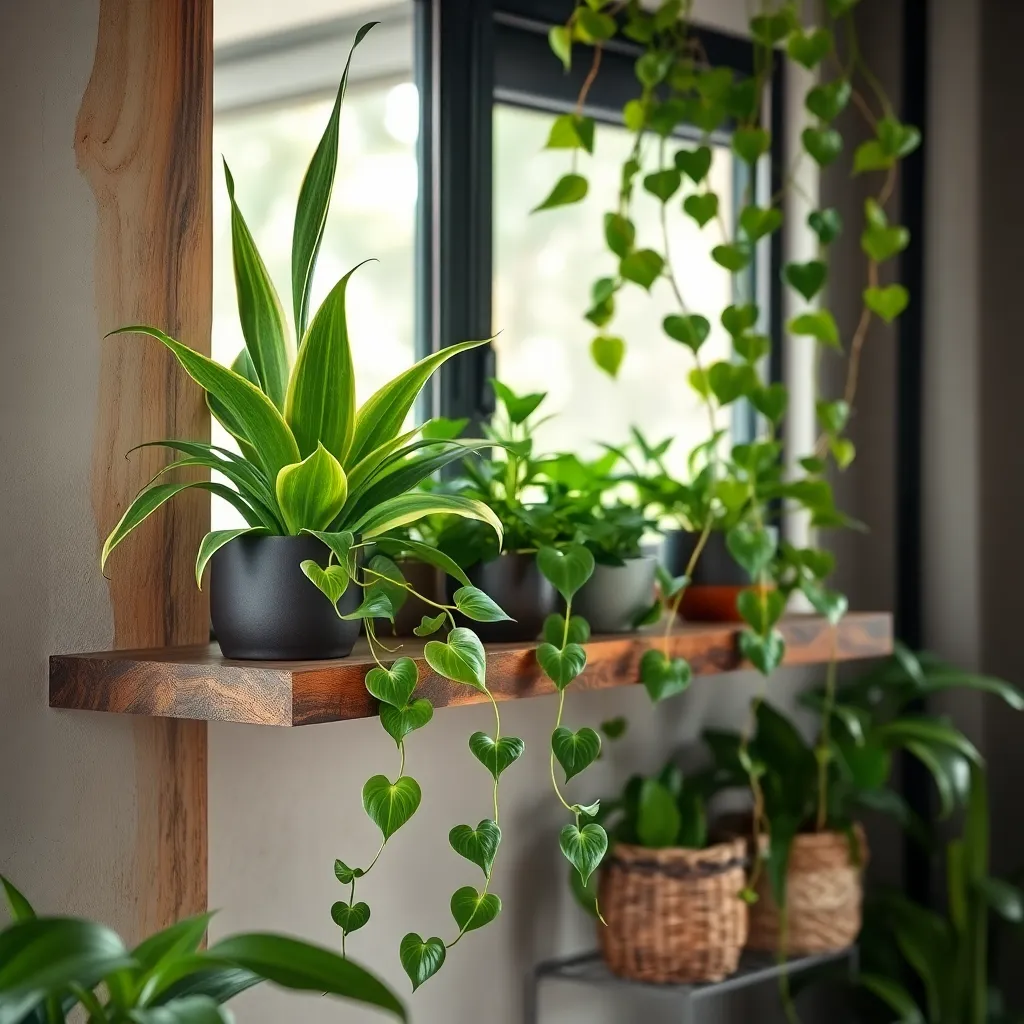
For apartment dwellers with limited sunlight, choosing the right plants is essential to create a thriving indoor garden. Snake Plant (Sansevieria) is a top choice, thriving in low-light conditions and requiring minimal maintenance.
Another excellent option is the ZZ Plant (Zamioculcas zamiifolia), which can tolerate neglect and low light. Water it only when the soil feels dry to the touch, as it prefers to be on the drier side.
Consider the Peace Lily (Spathiphyllum) for its beautiful white blooms and air-purifying qualities. It thrives in indirect light and needs watering about once a week, making it perfect for busy individuals.
For a touch of color, the Cast Iron Plant (Aspidistra elatior) is an ideal choice. It can survive well in low light and requires watering only when the top inch of soil feels dry.
Maintenance Tips for Indoor Plants
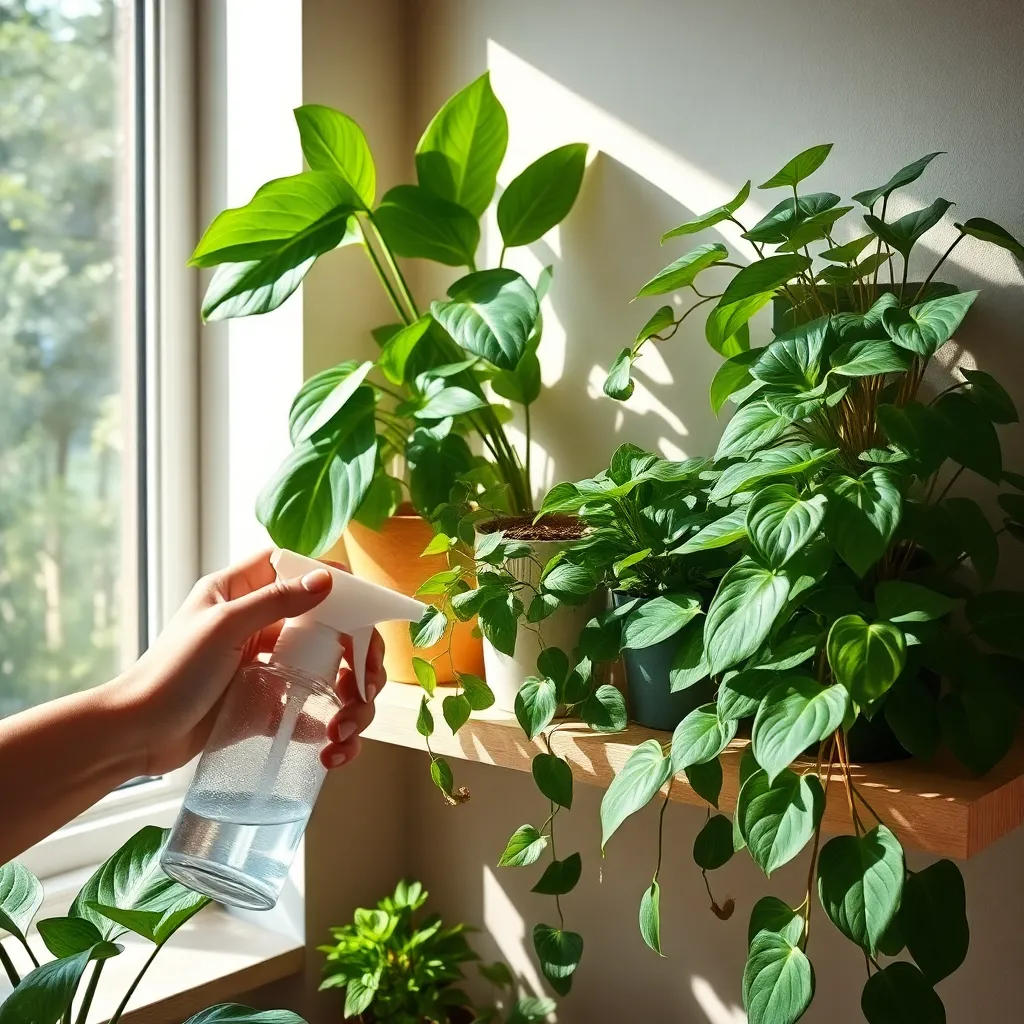
Maintaining indoor plants is as much about observation as it is about action. Regularly checking the plants for signs of stress or pests can prevent minor issues from becoming major problems.
It’s essential to understand the watering needs of each plant, as overwatering is a common mistake. Check the soil moisture by sticking your finger about an inch into the soil—if it feels dry, it’s time to water.
Different plants have different light requirements, so place them accordingly within your apartment. Rotate your plants every few weeks to ensure all sides receive equal sunlight, promoting even growth.
For those with more experience, consider the humidity levels in your home, as many indoor plants thrive in higher humidity. You can increase humidity by grouping plants together or using a small humidifier near your indoor garden.
Dust can accumulate on leaves, blocking sunlight and reducing photosynthesis. Wipe leaves gently with a damp cloth every few weeks to keep them clean and healthy.
Fertilizing is an advanced technique that can significantly boost plant health. Use a balanced, water-soluble fertilizer every month during growing seasons, but reduce feeding during the winter when plant growth naturally slows down.
Maximizing Plant Growth in Apartments
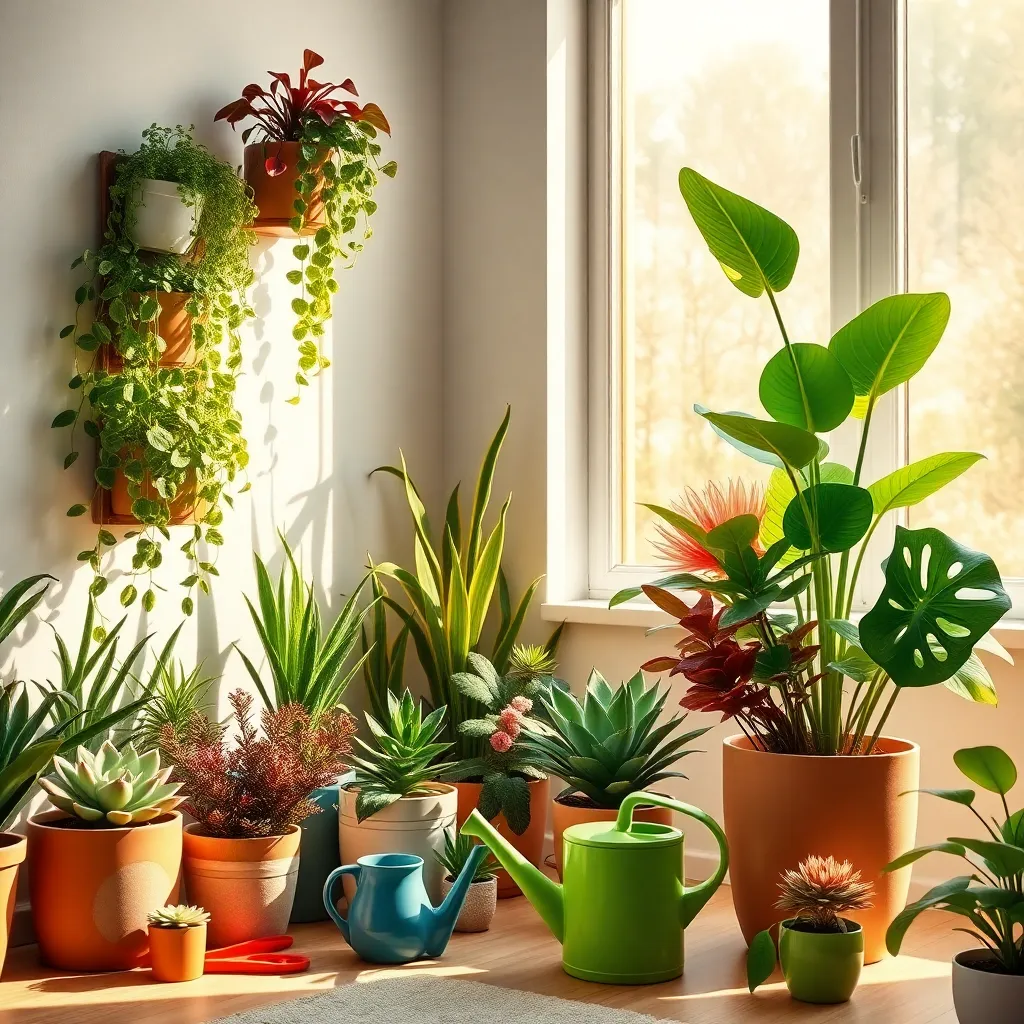
Optimizing plant growth in apartments begins with selecting the right spot for your plants. Choose locations that receive sufficient natural light, such as near windowsills, to ensure your plants thrive.
Utilizing the right soil mix is crucial to support healthy root development. A well-draining potting mix, often enhanced with perlite or sand, helps prevent waterlogging and promotes robust growth.
Watering practices significantly impact plant health, so adjust your routine according to the plant type and season. For most indoor plants, allowing the top inch of soil to dry out between waterings is a practical approach to prevent overwatering.
Providing essential nutrients can make a noticeable difference in plant vigor. Fertilizing every four to six weeks with a balanced liquid fertilizer keeps your plants nourished and supports continuous growth, especially during the growing season.
Creating a Lush Balcony Oasis
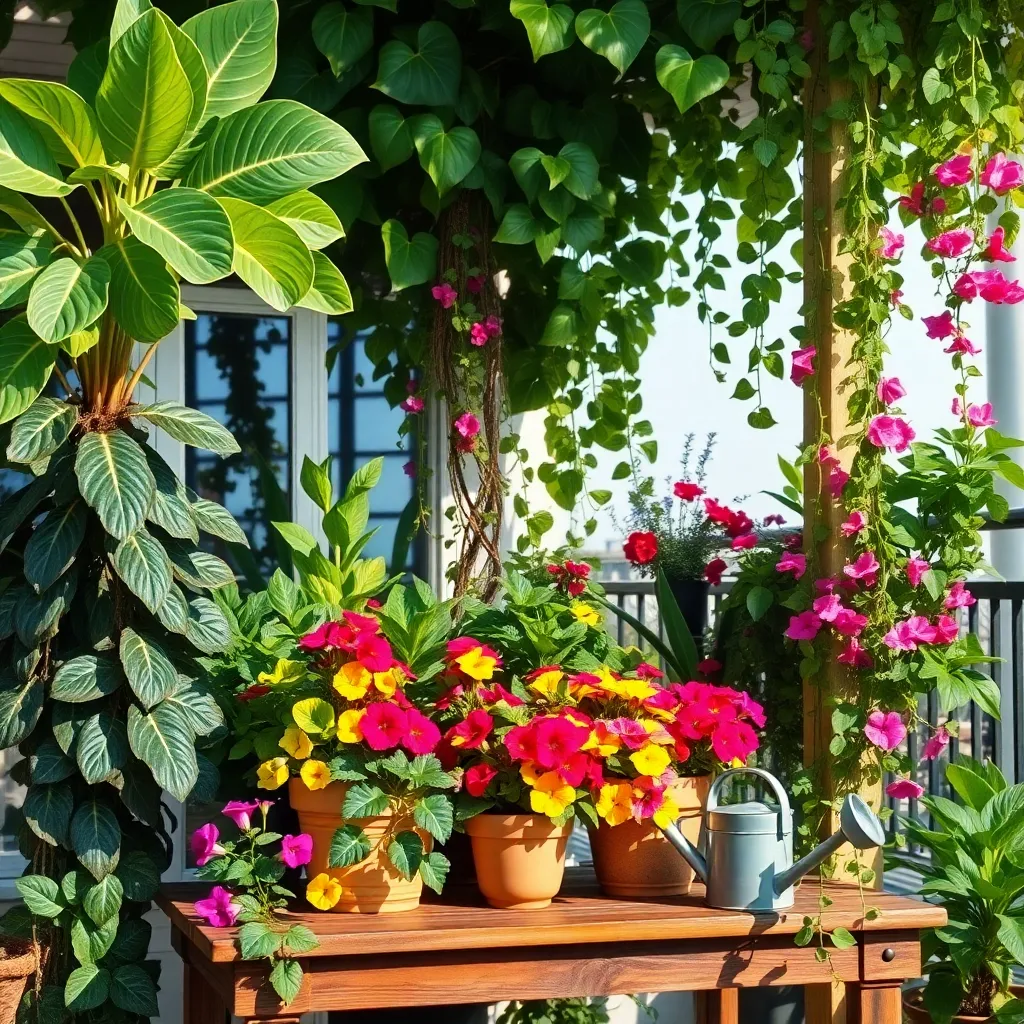
Transforming your balcony into a lush oasis begins with selecting the right plants that thrive in container environments. Consider using a mix of herbs, succulents, and flowering plants to add both visual interest and functionality to your space.
To ensure successful growth, it is crucial to choose the appropriate containers and soil. Use pots with drainage holes and opt for a well-draining potting mix to prevent waterlogged roots, which can lead to root rot.
Regular watering is essential, but overwatering can be detrimental. A good rule of thumb is to allow the top inch of soil to dry out between waterings, especially for plants like succulents and herbs.
Incorporate a mix of sun-loving and shade-tolerant plants to adapt to varying light conditions on your balcony. For sunny areas, geraniums and petunias are excellent choices, while ferns and hostas thrive in shadier spots.
Advanced gardeners might consider installing a simple drip irrigation system to maintain consistent moisture levels. This system can be set up with a timer to ensure your plants receive the right amount of water, even if you’re away.
Conclusion: Growing Success with These Plants
In nurturing thriving relationships within the cozy confines of apartment living, we explored five key concepts: the importance of shared space and how plants can enhance it, the role of responsibility in nurturing something together, the joy of celebrating growth milestones, the art of compromise in choosing the right greenery, and the tranquility that nature-inspired environments bring to emotional well-being. These insights are not just about greenery; they are about cultivating a nurturing relationship environment.
As an actionable next step, why not visit a local nursery or your favorite online plant store to choose a plant together with your partner? This simple act can spark conversation, cooperation, and a shared sense of purpose.
Remember, a flourishing relationship, much like a thriving plant, requires care, attention, and mutual effort. Bookmark this article now to revisit these nurturing tips whenever you need a fresh perspective on growing together. With every leaf unfurled and every new bud appearing, let your relationship blossom beautifully in the days to come. Embrace the journey of growth, knowing that every step you take together today is a step towards a more harmonious and fulfilling relationship tomorrow.

